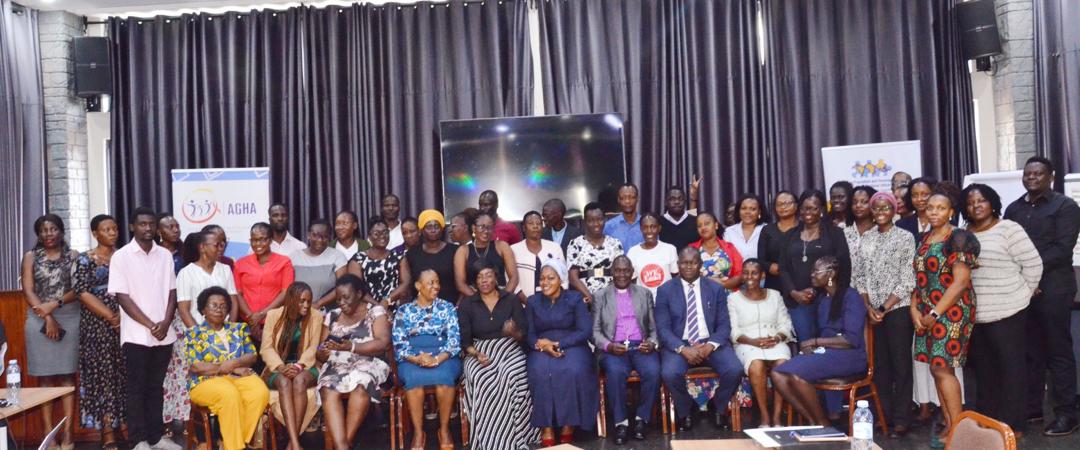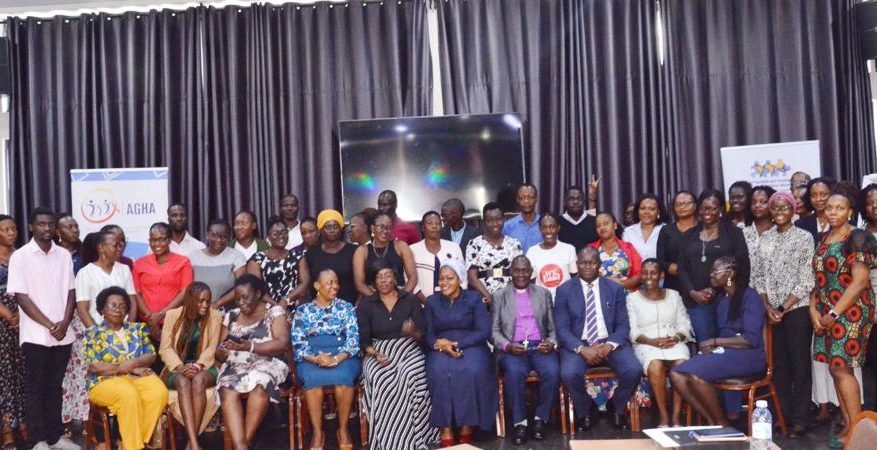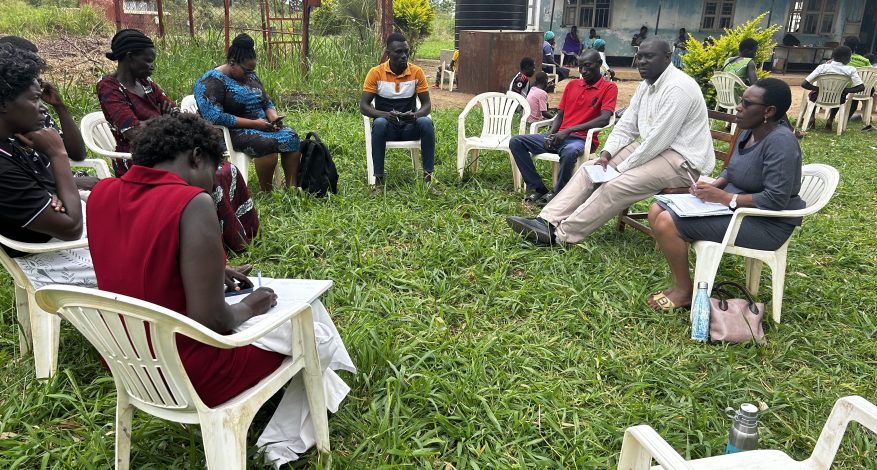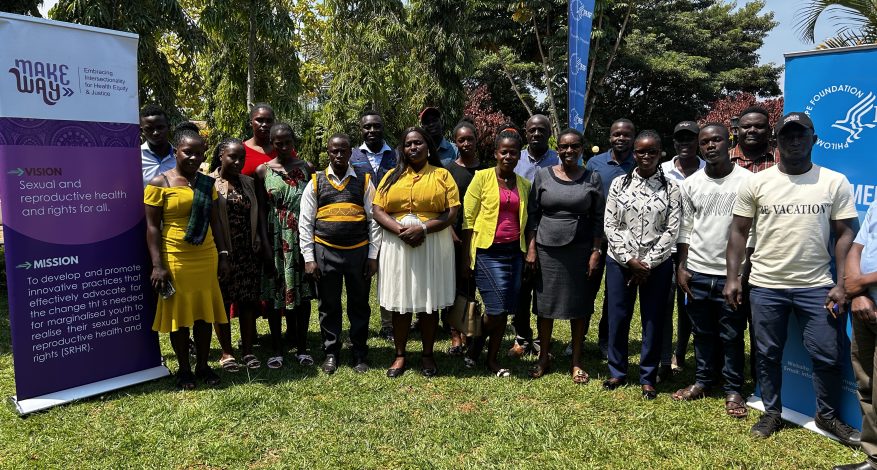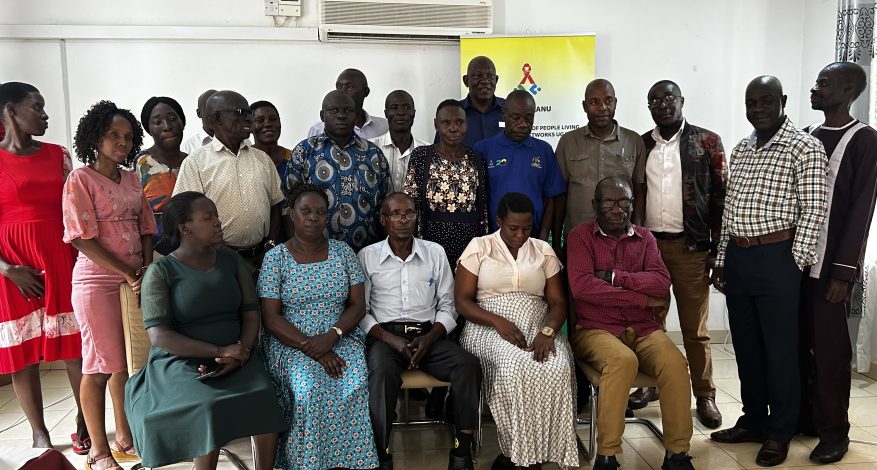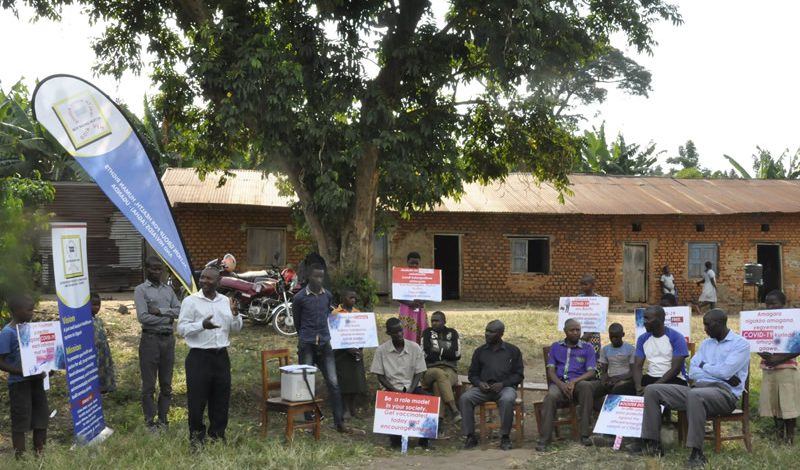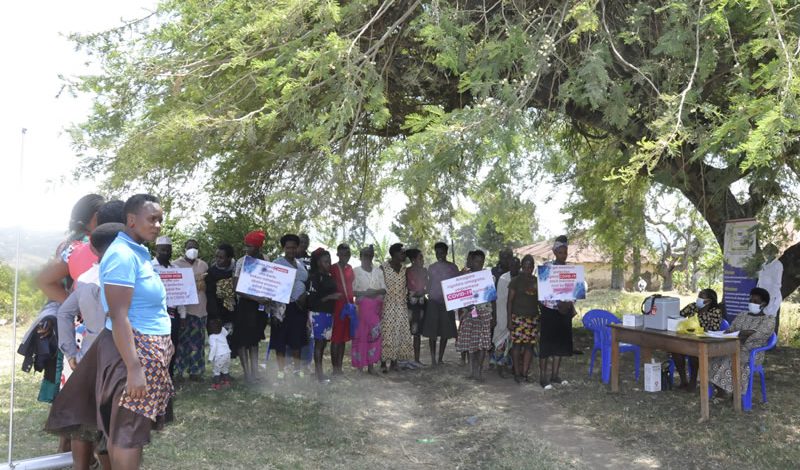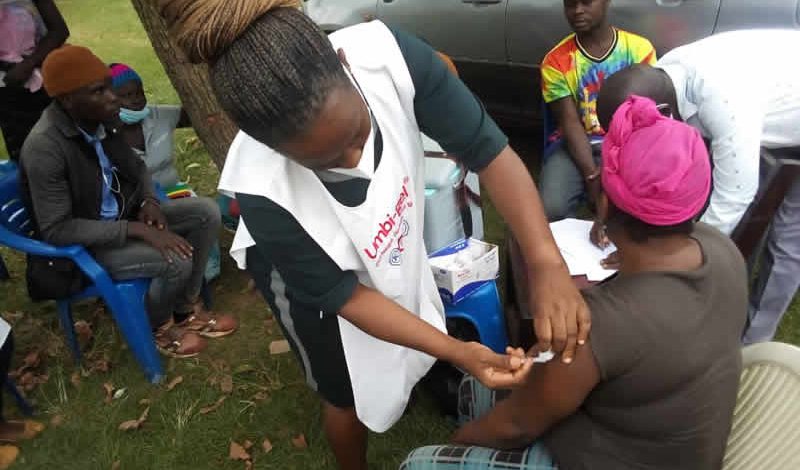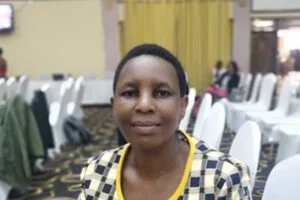
“We must continue to advocate for better HIV prevention and treatment to protect our children and future generations … it is unacceptable that, in 2024, babies are still being born with HIV”
Flavia Kyomukama – Executive Director, Action Group for Health Human Rights HIV/AIDS (AGHA), Uganda
Leading HIV patient advocate Flavia Kyomukama talks through the evolution of access to HIV treatment and prevention in Uganda over the last 30 years, as well as the challenges that remain, including sustaining the HIV response, combating stigma, and ensuring the prevention of mother-to-child transmission. She touches on some of the key concerns for women living with HIV, the intersection of aging and HIV, as well as the importance of community systems in ensuring an effective and long-lasting HIV response.
Can you introduce yourself and your long career in patient advocacy?
I am the Executive Director of the Action Group for Health, Human Rights, and HIV/AIDS (AGHA) in Uganda. I represent non-government organizations on the Global Fund Uganda Country Coordinating Mechanism Board and African patients’ organizations on the International Alliance of Patients’ Organizations Board (IAPO).
I serve on various governing bodies in Uganda, including the Uganda AIDS Commission and several technical working groups. Previously, I was on the Partnership Committee of the Uganda AIDS Commission, the Civil Society Fund (CSF), and various committees within the Ministry of Health. These included the Global Alliance to End AIDS among Children, Prevention of Mother-To-Child Transmission, and the National Community Health Strategy Implementation Technical Working Group (TWG).
Within the AIDS Commission, I have consistently been involved in the Social Support and Protection TWG. Additionally, I have participated in System Strengthening efforts. At AGHA, we focus on health financing advocacy, engaging with government ministries, departments, parliament, key policymakers, and communities.
My career began as a teacher, after which I worked with UNESCO in Mozambique as a HIV Advisor. Upon returning to Uganda, I co-founded the National Forum of People Living with HIV and the Global Coalition of Women Against AIDS. I supported the transgender and LGBT community from 2007 to 2010, advocating for the inclusion of HIV-positive individuals within these groups to join mainstream people living with HIV (PLHIV).
Later, I worked with the National Network of Sex Work Organizations (WONETHA), focusing on sex workers’ human rights and advocacy. At AGHA, my work currently centres around influencing national local and international health investments based on annual government budget policy and implementation.
How has the situation for people living with HIV in Uganda, like yourself, evolved in the last 30 years?
The situation for people living with HIV in Uganda has evolved significantly over the last 30 years. Currently, our key issue is sustaining the HIV response, with a focus on integration and coordinated efforts.
Around the year 2000, many of us were struggling to access medications. At that time, many of my peers relied on second-hand medication from Europe and America, often from those who had passed away or were subsequently enrolled on different regimens. Ugandan activists would meet activists from Europe and America at conferences, then would collect these medications and share them among the worse off. This saved many lives despite the limited supply. At the time the prices of antiretrovirals in Uganda were exorbitant, at around USD 500.
From 2003, PEPFAR helped introduce antiretroviral treatments (ARTs), which marked a significant improvement and turnaround in the lives of PLHIV. I participated in a DART trial for zidovudine, lamivudine, and tenofevir, which lasted eight years until 2008. The success of this trial led to broader access for many more Ugandans to these drugs. More recently, newer treatments like deltogravir have been introduced.
I also had earlier participated in the development of the oral TB treatments isoniazid and rifampicin, shortly after testing positive for HIV. This research led to the availability of oral treatments, sparing patients the pain of nine months of streptomycin injections with the only TB treatment that existed in 1994.
I have officially lived with HIV for about 30 years, having been diagnosed in 1994, but I probably contracted the disease in 1989, around the time I lost children to HIV-related conditions. I have delivered six babies, but sadly lost four of them due to HIV-related complications. My two surviving children were born HIV-negative, thanks to Prevention of Mother to Child Transmissions (PMTCT) programmes. My youngest is now 24, and my eldest surviving child is 27. I lost my eldest son, who was born with HIV, to lymphoma in 2018.
Throughout these years, I have been involved in HIV and AIDS policy, planning, programming, implementation, and monitoring efforts across the country. My journey has been challenging but also filled with significant progress/success in HIV prevention, care and treatment, social support and protection.
What are some of the key concerns around women and HIV at the moment?
As women living with HIV in Uganda, we face significant challenges, especially in ensuring we deliver HIV-negative children. Despite progress, the situation remains troubling. Currently, the HIV prevalence among women is 6.5 percent, which is higher than the national average of 5.1 percent across genders. In 2022 alone, there were 52,000 new infections, with 15,000 of these new infections among adolescent girls and young women. This trend is alarming and frankly unacceptable 42 years into the Ugandan HIV epidemic and response.
Moreover, vertical transmission rates increased from about 5,000 to around 5,900 in the same year. This is very concerning because, previously, we had managed to protect our children from HIV. Today, unfortunately, more children are being born with the virus, and it is becoming increasingly difficult to ensure our children are born HIV-free because of the consistent stigma and discrimination that PLHIV, especially young people, face.
In response, the newly formed Movement of Women Living with HIV and AIDS in Uganda (MOHWA), under the Women@40 Campaign 2021, is uniting to get back to the drawing board. MOHWA aims to mobilise all networks of women living with HIV to engage partners and garner ways to ensure the children we laboured with limited technologies to deliver HIV-free cease acquiring HIV and having babies with HIV. We are saying it is unacceptable that, in 2024, babies are still being born with HIV. We must continue to advocate for better HIV prevention and treatment to protect our children and future generations. We have to rekindle the role of WLHIV communities and provide intergenerational support and protection to mentor the younger ones and newly diagnosed WLHIV. This will help ensure positive health dignity for HIV prevention.
Are there some specific factors at play in Uganda, compared to other countries in sub-Saharan Africa, that are exacerbating this problem?
Yes, several specific factors in Uganda are exacerbating the HIV problem. Firstly, there has been a significant increase in corruption, which has impacted our ability to manage HIV efficiently and effectively. Additionally, stigma and discrimination remain high, particularly against vulnerable communities, including adolescent girls and young women. The COVID-19 pandemic highlighted these issues, with a noticeable rise in sexual and gender-based violence as well as teenage pregnancies. Many girls and young women were impregnated by family members or acquaintances, and law enforcement often failed to address these crimes adequately. Another major issue is the normalization of such violence to the extent that politicians do not see the crisis as what it is. This attitude reflects a broader societal problem.
Uganda’s Anti-Homosexuality Act has also disrupted HIV and AIDs related work. LGBTQ+ women living with HIV are particularly affected, as they often face collective rape or feel pressured to engage in heterosexual relationships to avoid targeting. This increases their risk of contracting HIV. Additionally, the criminalization of HIV in Uganda further complicates the situation. The law stipulates severe penalties for those accused of knowingly spreading HIV, which can deter people from seeking testing and treatment due to fear of prosecution. This law often ends up stripping away necessary protections for those living with HIV and places the burden of HIV prevention on the PLHIV.
What are some of the other key issues to consider for people living with HIV in 2024?
A major issue for those of us who have lived with HIV for 30 years is the increasing prevalence of non-communicable diseases among older individuals. Recently, we started discussing the implications of menopause and andropause for those living with HIV. Menopause can lead to health problems such as hypertension, osteoporosis, depression, and cardiovascular issues. Aging naturally brings complications but aging with HIV, especially on ARTs, adds more layers of complexity.
We are often faced with the little-known complications that come with age that have become a common compounding factor among PLHIV– such as cancer, diabetes, hypertension, hearing loss (tinnitus), and mobility issues – that may be due to natural aging, the effects of long-term ART, or HIV itself. For instance, I have had cancer and needed surgery, and many of my colleagues face similar health challenges.
Another silent issue is polypharmacy due to multiple co-infections and diseases. People living with HIV often take multiple medications, including ART and treatments for other conditions, without adequate guidance on how these medications interact. Clinics rarely ask about other treatments we might be taking, leading to unknown interactions and side effects.
Finally, our country’s level of comprehensive knowledge about HIV is still limited, with less than 50 percent of the population having an adequate understanding. This lack of knowledge limits access to and utilisation of services, leads to late presentation of diseases to health professionals, exacerbates stigma, makes it difficult for individuals to accept their HIV status, and complicates disclosure. Young people, especially adolescent girls, boys, and young adults, struggle to manage their sexual and reproductive health in this context.
Globally, we are now seeing higher HIV incidence among adolescents who were born after the initial devastation of the pandemic and the intense awareness campaigns that followed. Is this an issue you are seeing in your country and among the groups you work with as well?
Absolutely. There are significant gaps in information among both the younger and older generations. Even when people have information, they often prioritize other concerns over HIV. Many fear pregnancy or tuberculosis more than HIV because they know there is treatment for HIV. This has led to a sense of complacency.
This is exacerbated by the fact that, despite 42 years of HIV, we still do not have an HIV cure or vaccine. Although there are ongoing efforts to find a cure and new projects supported by PEPFAR for injectables and two-month ART, the progress feels snail-slow. It is particularly frustrating when you compare it to the rapid development of treatments and vaccines for COVID-19, which were achieved in just a few months. Has this delay been deliberate to allow businesses first to gain outsized profits from their ART products?
It seems that when rich countries face a disease that affects them directly, resources, mobilization, cross-stakeholder partnerships, and energy are quickly assembled. In contrast, HIV, though more complex due to its mutability, has not seen the same urgency. Was the COVID-19 response an inspiration to you, or a frustration?
It was a frustration and a realization that the pharmaceutical industry and wealthy nations often overlook the needs of the Third World. The West has taken so much from Africa, Asia, and South America, yet they fail to give back appropriately when it matters most. We continue to rely on pharmaceutical companies that profit immensely without prioritizing our needs.
Take the drug deltogravir, for instance. Its side effects, such as hypertension, are well-known, yet it is still promoted as a “wonder drug.” We need better medications that do not cause additional health risks to people who have already suffered HIV and AIDs for 42 years. After living with HIV for 30 years, the complications from these medications feel like an added burden that continues to drive us to poverty. In most cases, the government provides ARTs but not opportunistic infection treatment.
It is hard not to wonder if there is an intention on the part of pharma to keep PLHIV dependent on medication for conditions like hypertension, diabetes, and depression alongside the ARTs we need. This dependency isn’t cheap; even if a drug costs five dollars, the majority of Ugandans live on less than that per month.
The slow progress of vaccine trials for HIV is another frustration. We are left questioning how far the vaccine and cure trials have really advanced and when we will see the benefits. We are tired of the medication but have no choice but to continue taking it to live longer! 21 years on pills takes a real heart and spirit to adhere.
Several late-stage vaccine trials have failed and while new approaches such as those utilizing monoclonal antibodies, hold promise, it could be decades until they reach fruition. How do you feel about this timeline?
It does not seem like an emergency; it feels like just another research project. Why don’t we invest in HIV research like we did for COVID-19? We have so much information about HIV: how it mutates, where it is concentrated, and how to keep it inactive for many years. Sometimes, it makes you wonder where we went wrong. Why has it taken over 40 years to develop a HIV vaccine, while other vaccines – such as those for COVID-19 – have been developed much faster?
We do appreciate the efforts being put into vaccine research and trials, and we are grateful to the patients who participate in these trials, often at great personal risk. Some even turn HIV positive during the trials, and many countries do not have the insurance to support them post-trial. These patients are incredibly patient and selfless, offering their bodies to help others.
Additionally, we are eagerly awaiting news about a cure. It would be a tremendous innovation if a cure was found, freeing us from the daily medication regimen we have endured for years. I have been on ART for the last 21 years, and a cure would be life-changing for so many of us. We dream of such a day when we do not have to swallow a pill!
Towards which areas of the HIV response would you like to see more funding diverted?
Initially, from the 2000s up to around 2010, there was significant activism demanding resources and support for the HIV response. However, once ART became more widely available, many of us thought we had won the battle and retreated. But the war is far from won; we still have a lot of work to do.
PEPFAR, UNAIDS, and the WHO have realized that ending AIDS requires working with community systems, engaging community personnel, and investing in community structures. Only people with HIV can truly complement government efforts to reach the last mile. In Uganda, between 80,000 to 120,000 people are non-suppressed already, depending on the data source. Many of these individuals have defaulted on treatment, and every year 23,000 PLHIV are lost to follow-up, particularly adolescents and young people.
We need to invest in reaching out to communities and enhancing treatment literacy, which has been neglected. Governments have avoided investing in primary health care and community engagement, believing that medical facilities alone would suffice. However, the past 42 years have shown that this approach is insufficient. To eradicate HIV, patient involvement is crucial and critical to HIV prevention.
During the Ebola outbreak, people with HIV and sex workers supported the government by collaborating with traditional healers to ensure quick referrals and hospitalizations for identified cases. This demonstrates the importance of community involvement. It is high time we make more investments in communities to enhance our HIV response in order to end AIDS by 2030.
The very ambitious goal of ending AIDS as a public health threat by 2030 is not likely to be fully achieved, but what actions would you like to see taken over the next six years to move towards it?
We are now asking for integration wherever we are investing in the HIV response. This means HIV services not standing alone but ensuring we integrate non-communicable diseases, TB, and HIV into a systems approach, avoiding fragmented systems. We need to invest in community systems strengthening, as this is the last mile that will take us to end AIDS as a public health threat by 2030.
I would also like to see sustainability investments. Those with resources should start investing in the health systems of member states and health systems programming. We need a unified health system that supports and serves everyone, addressing NCDs, mental health, counselling, and education for various diseases. Investment in primary health care is fundamental. While we appreciate the provision of ART, investing in PHC might reduce future dependence on medications.
Health financing is crucial, particularly governments taking control of their epidemics by looking at domestic sources for investing in health and HIV. In Uganda, we have seen partners pulling out resources, like the World Bank threatening to withhold loans that support reproductive health and economic ventures. We need to look internally, use our resources more efficiently, and focus on economic and budget efficiencies to reach more people, protect more, and prevent more diseases. Health promotion is paramount.
We need sustainable health systems, and as a country, we should implement a National Health Insurance Scheme. Despite the president’s hesitation and the health minister’s reluctance, it is a way to build a stronger, integrated system that can reach all community members and serve everyone. This would reduce our dependency on external aid and allow us to rely on our system to serve our communities.
At the end of the day, it is about self-determination. If we do not get the resources from within and serve our people, who is going to do it for us? Others will set their own priorities, but if we set our priorities, we can better serve our nations with what we have, investing in the most appropriate and necessary areas to help the population.
